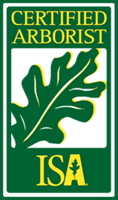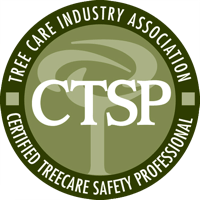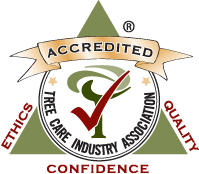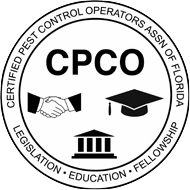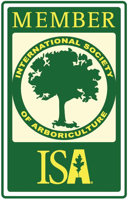Disease in trees poses a significant and pervasive issue in South Florida due to the region’s unique climate and environmental factors. The subtropical and tropical conditions create an ideal breeding ground for various diseases in trees, including fungal infections and insect infestations. High temperatures, humidity, and frequent rain provide an environment where pathogens and pests thrive, making trees more susceptible to infection. South Florida boasts a diverse range of tree species, some of which are non-native and lack natural resistance to local diseases, making them particularly vulnerable. Tree diseases can also spread rapidly from tree to tree, affecting not only the individual tree but entire ecosystems and landscapes. As providers of tree service in Palm Beach FL can rely on, the experts at Zimmerman Tree Service take a deep dive into what you need to know about fighting disease here. Our team provides insights such as these regularly on what to expect from South Florida arborists clearer for current and future clients.
What Is the Most Common Tree Disease?
In the subtropical climate of South Florida, trees face a range of challenges, but one of the most prevalent and concerning issues is the presence of the lethal Ganoderma butt rot, a pervasive tree disease. This illness is caused by various species of Ganoderma root rot, which can infect a wide array of tree species, including palms, hardwoods, and conifers. Its insidious nature and significant economic impact have made it a subject of considerable concern for arborists and tree enthusiasts alike.
Ganoderma butt rot typically infiltrates trees through wounds or weakened areas, such as those caused by pruning, storm damage, or root injuries. The disease gradually decays the interior of the tree, targeting the heartwood and causing structural instability. The most distinctive and recognizable symptom of this tree disease is the appearance of conks or shelf-like fruiting bodies at the base of the tree, signaling that the tree is sick. These conks release spores, perpetuating the cycle of infection and further threatening neighboring trees.
Once a tree is infected with Ganoderma zonatum, there is no cure for this tree illness. Arborists face the challenging task of managing affected trees by assessing their structural integrity and risk to human safety when the tree is sick. Preventive measures, such as avoiding unnecessary wounds and practicing proper tree care, are essential to reduce the likelihood of infection by this common disease in South Florida. Regular inspections by certified arborists can also help in the early detection and prompt removal of infected trees to prevent the spread of this destructive illness.
Can a Tree Recover From Disease?
The prospect of a tree recovering from disease is a topic of great interest and concern for tree enthusiasts and arborists. Trees, like any living organism, have a remarkable capacity for resilience, and recovery from disease is indeed possible under certain conditions.
Early detection and accurate diagnosis are crucial when dealing with these problems. Identifying the specific tree disease and its severity is essential for determining the appropriate course of action. Some issues with trees, if caught in the early stages, can be managed effectively through pruning, sterilizing equipment, or applying targeted treatments. However, not all tree diseases can be treated, and in such cases, the focus shifts to containment to prevent the spread to nearby trees.
The tree’s overall health plays a significant role in its ability to recover from illness. A well-maintained tree with good vitality is more likely to withstand and heal from an infection caused by tree diseases such as Ganoderma zonatum. Arborists often recommend proper tree care, including regular pruning, adequate watering, and fertilization, to prevent experiencing such problems with trees.
Environmental factors also come into play when addressing complications. Favorable growing conditions, such as appropriate soil quality and drainage, can aid in recovery from tree illnesses and other similar issues. However, excessive stressors, such as drought, root compaction, or pollution, can hinder a tree’s ability to bounce back.
While recovery from tree disease is possible in some cases, it largely depends on the disease’s nature, the tree’s health, and the environmental conditions. Early intervention and proactive tree care are key elements in improving a tree’s chances of recovery from problems with trees, but it’s important to recognize that not all diseases can be cured, and managing these kinds of issues becomes the primary goal.
How Do You Get Rid of Tree Plague?
Addressing tree-related issues, specifically tree plague, is a nuanced endeavor that requires careful consideration and a tailored approach. Arborists, committed to offering information rather than promoting services, can provide valuable insights into managing this challenging issue.
To combat tree plague and other problems of this ilk, the first step is accurate identification. Arborists possess the knowledge and expertise to pinpoint the specific disease affecting your tree. Once the disease is identified, a customized tree care management plan can be devised.
Pruning and sanitation are vital components of tree care when dealing with a tree suffering from disease. Arborists can recommend and carry out appropriate pruning to remove infected branches and enhance tree health. Sanitation measures, such as the removal of fallen leaves or fruit, help contain the disease’s spread.
In certain cases, arborists can suggest treatments to mitigate the disease and offer solutions for tree management and care. This may involve the application of fungicides, insecticides, or other treatments tailored to the specific tree plague or similar issues.
Arborists can conduct a comprehensive tree health assessment to evaluate the tree’s overall condition. This assessment includes recommendations on how to improve its vitality, encompassing aspects of proper watering, fertilization, and soil management.
Lastly, preventive actions are essential in disease management and care to reduce the risk of tree plagues. Arborists can advise on measures like regular inspections, prudent pruning, and maintenance practices to minimize future outbreaks.
While seeking the counsel of a certified arborist is a prudent approach when dealing with tree plagues, the strategy to combat such diseases should always be based on the specific type and severity of the issue. Professional arborists offer invaluable expertise and guidance in tree management, alongside their health assessment services, to navigate the complexities of tree disease.
Zimmerman Is Palm Beach County’s Top Arborist
Zimmerman stands as a premier provider of trusted tree disease care services in Palm Beach, firmly rooted in our unwavering commitment to community trust. Our primary mission is to assist our neighbors in nurturing and preserving the well-being of their trees. Our comprehensive range of services is designed to ensure that your trees receive the dedicated care they truly deserve, whether it’s routine maintenance or specialized attention. Backed by our seasoned professionals, we offer unparalleled tree services, ready to serve the South Florida region.
We deeply appreciate the importance of safeguarding the vitality of your trees and are armed with the knowledge and expertise required for the task. Discover our South Florida tree blog, which is exclusively dedicated to tree health services for maintenance and nurturing. It provides valuable insights into various aspects of our tree services and beyond, sharing our wealth of knowledge with the community. When you choose Zimmerman for South Florida tree service and care, you are embracing excellence at every step of our service. We are dedicated to delivering top-tier tree care to our valued customers, contributing to the growth of thriving green havens throughout Palm Beach. Don’t hesitate to get in touch with us today to experience the expertise and excellence that define our distinguished tree services in Palm Beach.

